ハナショウブの花は花色が豊富で、絞りや覆輪、三英咲きに六英咲き。全部で5000種類くらいと多いものの、花には必ず黄色い筋が入ります。
The flowers of Japanese iris are rich in flower color, and they are squeezed, covered with rings, and bloom in three big petals and six petals. There are as many as 5,000 types in all, and the flowers always have yellow streaks.
【仮名】ハナショウブ
【和名】花菖蒲
【英名】Japanese Iris
【学名】Iris ensata
【誕生】05/ 04, 05/ 05
【開花】05, 06月
【花色】White, Pink, Purple, Violet, Blue, Yellow
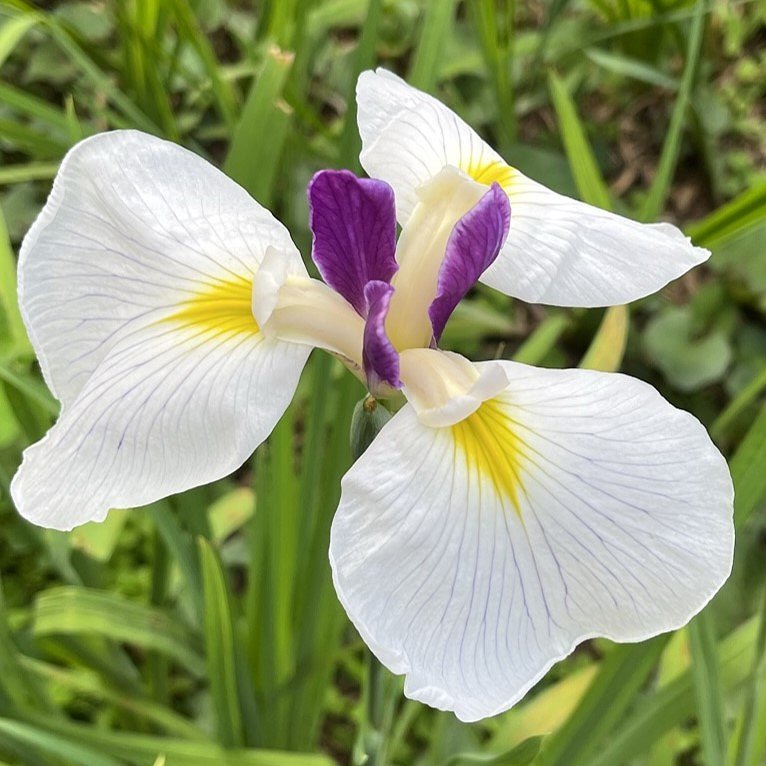
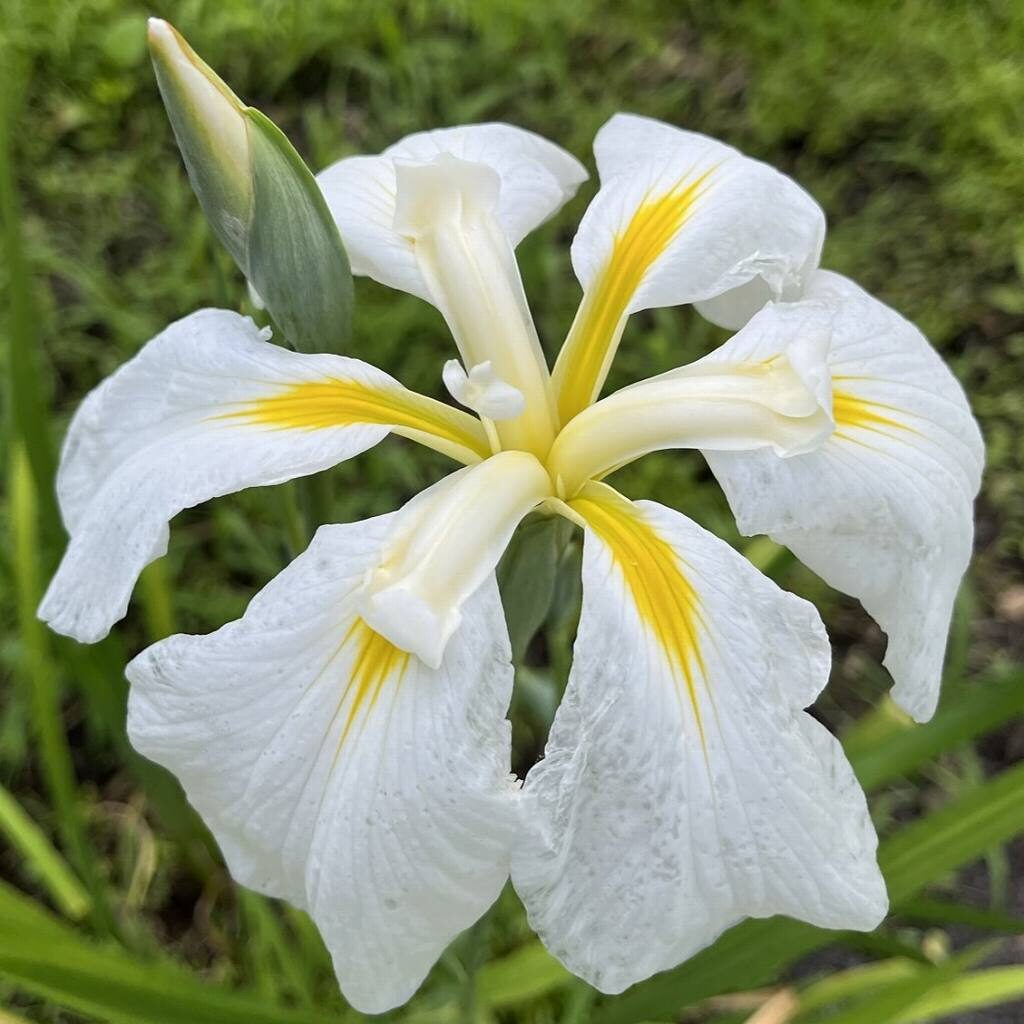

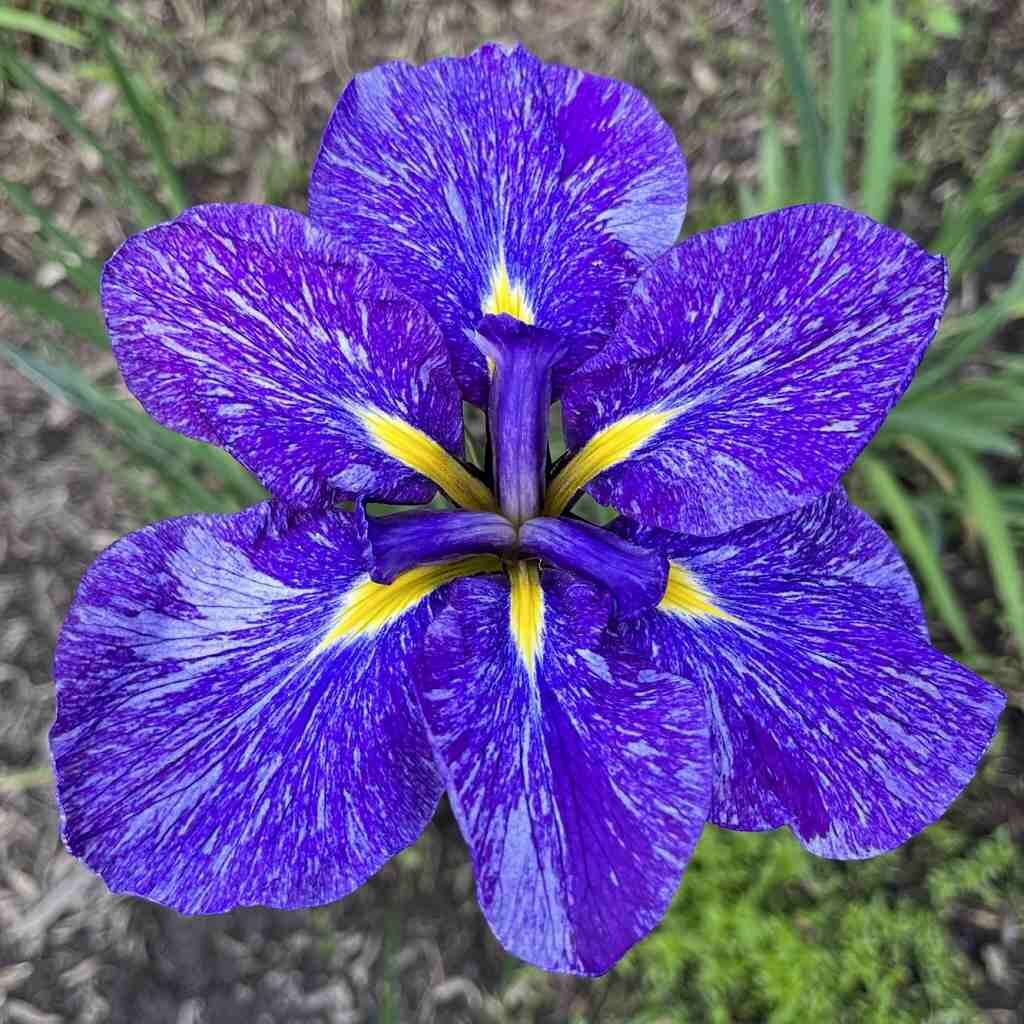
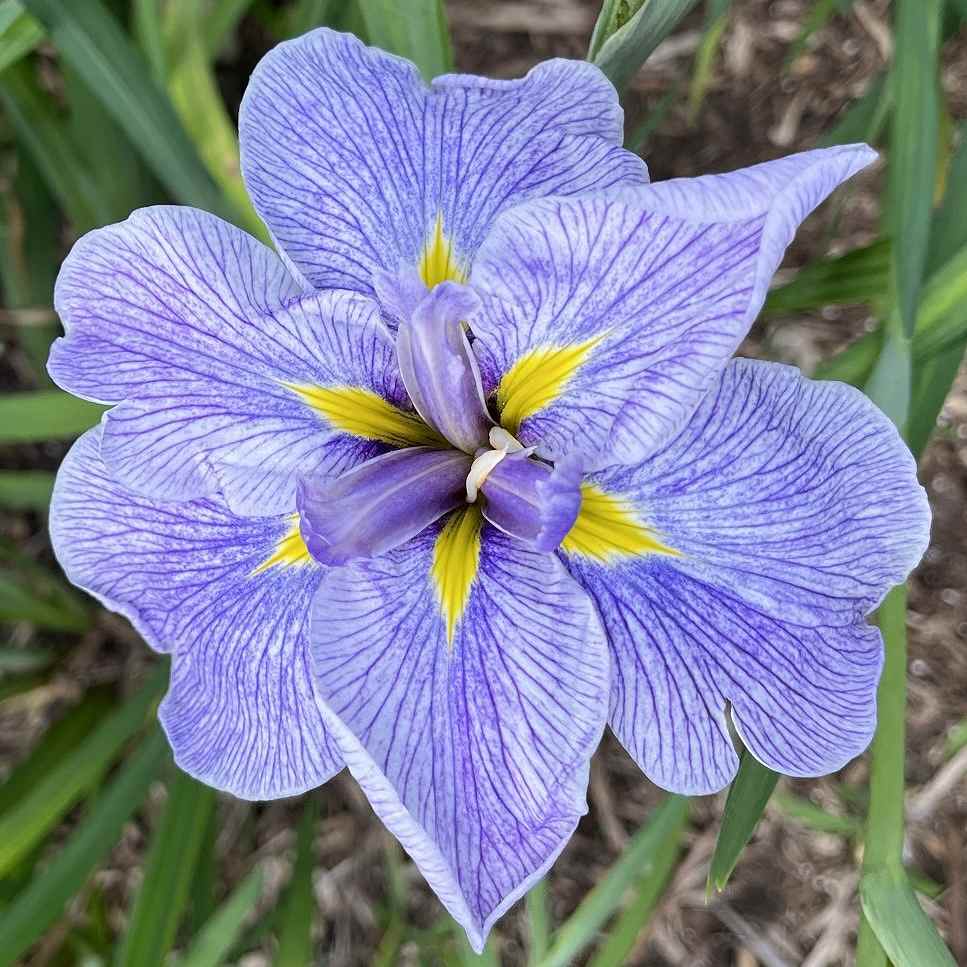
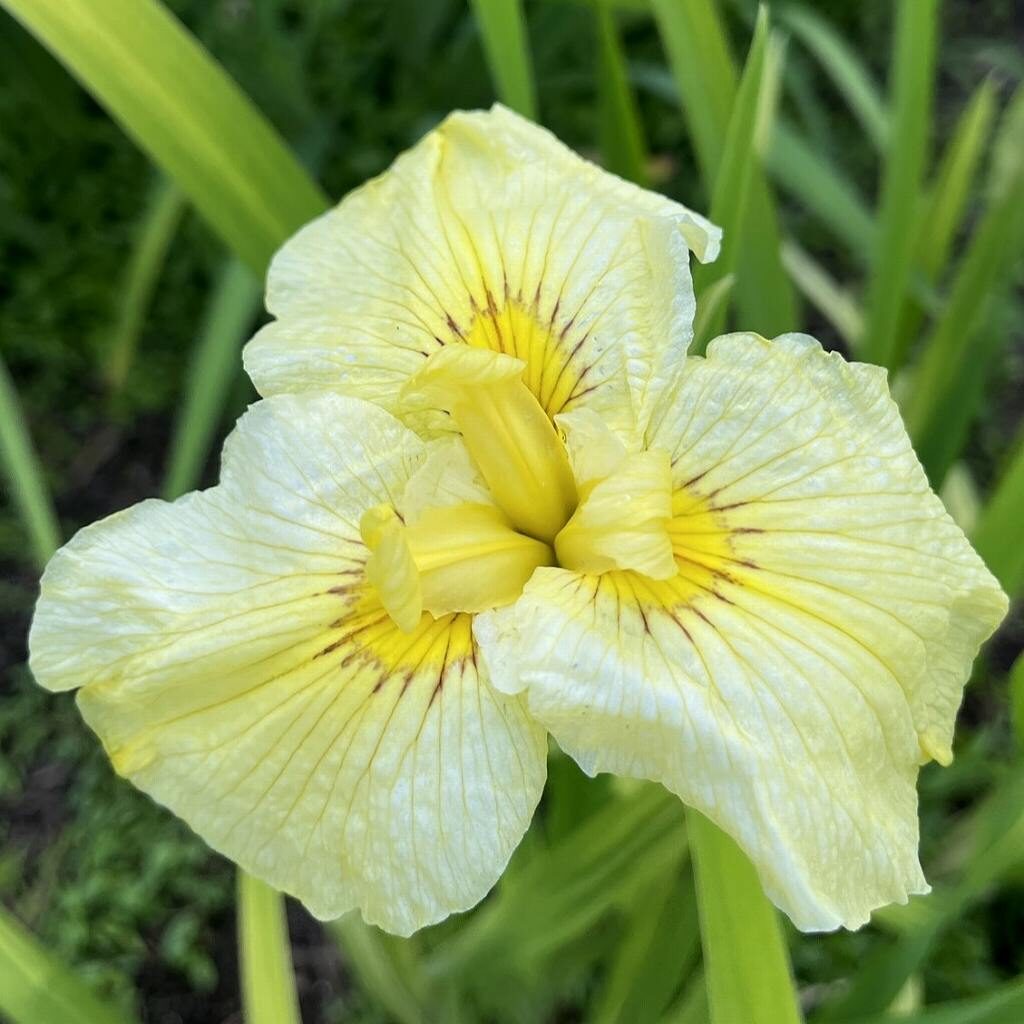
ハナショウブ
ハナショウブの来歴
ハナショウブはアヤメ科の多年草。日本に自生する原種「野花菖蒲」から改良された園芸種です。おもな系統は、品種が豊富な江戸系、屋内での鉢植えに向く伊勢系と肥後系、原種の特徴を引き継ぐ長井古種、戦後に米国で育成された外国系。水もちと水はけの良いところを好みます。
ハナショウブの名前
ハナショウブの名前の由来は葉が菖蒲(ショウブ)に似ているから。しかし、菖蒲はショウブ科で、ガマの穂のような形の地味な黄緑色の花が着きます。一方、ラテン語の属名イリスは「虹の女神」、種名エンサタは「剣のように鋭い」という意味。花の美しさと葉の形に由来します。
ハナショウブの形態
ハナショウブの花は色が豊富で、さらに絞りや覆輪、三英咲きに六英咲き。そのため、全部で5000種類くらいと多いものの、花には必ず黄色い筋が入ります。葉は細長い扁平形。葉幅が文目(アヤメ)より広く、杜若(カキツバタ)より狭く、縦に1本くっきりとした葉脈が走ります。
ハナショウブの総称
ハナショウブは別名「花文目」です。文目や杜若とともに外観がよく似ているので、昔から同じ「あやめ」と総称。「いずれが文目か杜若」という慣用句は、「優劣をつけられないくらい素晴らしい」という意味とともに、「見分けがつかないくらい似ている」という意味もあります。
ハナショウブの近縁
ハナショウブに似た「あやめ」類は開花始期と花色に違いがあります。一初(イチハツ)は4月下旬から青紫の花に白いヒラヒラ。文目は5月上旬から青紫の花に網目模様が入ります。杜若は5月中旬から青い花に白い筋入り。花菖蒲は6月上旬から様々な花色に黄色の筋が入ります。
Japanese Iris
History of Japanese iris
Japanese iris is a perennial herb of the Iridaceae family. It is a gardening species improved from the original species “Wild Japanese iris” that grows naturally in Japan. The strains are the Edo strain, which has abundant varieties, the Ise strain and Higo strain, which are suitable for indoor potted plants, the Nagai old species, which inherits the characteristics of the original species, and the foreign strains cultivated in the United States. They prefer a well-drained area.
Japanese iris name
The origin of the name Japanese iris is that the leaves resemble Acorus calamus. However, Acorus calamus belong to Acoraceae Martinov family, and they have sober yellow-green flowers shaped like the spikes of a cattail. On the other hand, the Latin genus name Iris means “rainbow goddess” and the species name Ensata means “sharp like a sword”. It comes from the beauty of the flowers and the shape of the leaves.
Japanese iris morphology
The flowers of Japanese iris are rich in color, and they are squeezed, covered with rings, and bloom in three big petals and six petals. Therefore, there are as many as 5,000 types in all, but the flowers always have yellow streaks. The leaves are elongated and flat. The leaf width is wider than Iris sanguinea, narrower than Iris laevigata, and one clear leaf vein runs vertically.
Generic name for Japanese iris
Japanese iris is also known as “Flower iris”. Since the appearance is very similar to Sanguinea and Laevigata, it has been collectively called “Iris” for a long time. The idiom “Which is Sanguinea or Laevigata” means “it’s so wonderful that you can’t tell the difference”, but it also means “it’s indistinguishably similar”.
Close relatives of Japanese iris
“Iris” similar to Japanese iris have a difference in the beginning of flowering and flower color. Iris tectorum blooms bluish purple flower with white fluttering from the end of April. Iris sanguinea blooms the blue-purple flowers with mesh pattern from the beginning of May. Iris laevigata blooms white streaks on blue flowers from mid-May. Japanese iris bloomss yellow streaks in various flower colors from the beginning of June.


